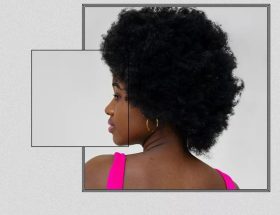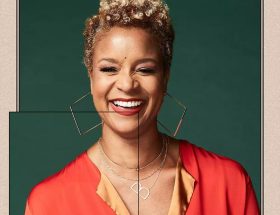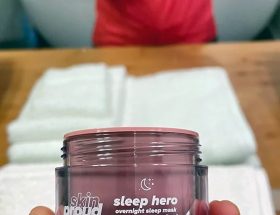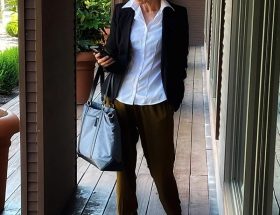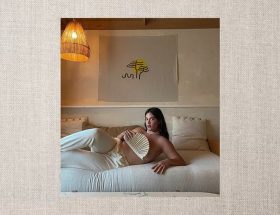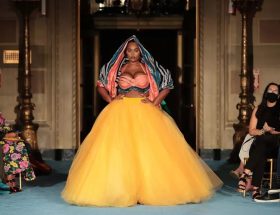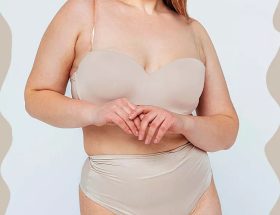Here’s How I Repaired My Heat Damaged Curls At Home
when I decided to cut my damaged hair over my college apartment sink, I made a vow that I would never go back to mistreating my hair. However, over time, with my newfound knowledge about curls and hair care, I became more lenient and open to experimenting with my hair. I became open to the possibility that if I took enough steps to protect my hair, straightening it occasionally wouldn’t have significant effects. I can confirm that was a naive assumption.
What started as straightening my hair for special occasions and my favorite half up-half down weave look turned into straightening my hair multiple times. The moments of running my fingers through my strands without snagging on my curls felt blissful. To put my hair into a messy bun without whipping out my go-to gels and creams felt like a nice change of pace. I became spoiled by the simplicity of a straight-hair routine. After four years on the road to natural hair recovery, I forgot how enjoyable having a silk press was.
Year after year, my hair felt strong enough to withstand anything. Still, my repeated use of hot tools damaged my hair, resulting in damage that could have been avoided.
After my third straightening stint, I washed my hair in an attempt to revert to my coily texture. The moment my hair touched the water, the faint smell of heat circulated in my bathroom. My jaw nearly fell to the floor when I unraveled my DevaTwist Microfiber Towel and saw how bad the damage was. My hair was brittle with frayed ends and had little to no curl pattern. The looseness of my curl was consistent with my hair years back when I used chemical relaxers.
As I assessed the damage, I considered another big chop, but instead, I decided to go back to the drawing board and revisit some at-home hair repair methods that I used when I first started my hair journey. I learned was quickly reminded that everyone’s hair journey goes through phases, and the reparative stage is one of them. Experimenting with your hair is a beautiful thing, but keeping it healthy is the priority I come back to. Ahead, I’ve rounded up some of the at-home steps I’ve taken to bring my type four curls back to life.
This part is essential—possibly a bit scary—but also doable from home (with caution). When I first chopped my hair in 2016, I used YouTube as my guide for shaping and cutting the damaged ends that needed to be eliminated. Sure, it was risky, but trimming your ends where damage is the most prevalent can be helpful.
To carefully chop frayed ends, I used cutting shears to snip the visibly damaged pieces. This not only helped my hair grow healthier, but it allowed me to focus on the parts of my hair that were in good shape versus concentrating on the pieces far too gone. Of course, you should only trim your hair at home if you’re comfortable with it. If the thought of snipping your ends at home feels scary, you should consult a natural hair professional to get the job done in-salon.
My hair needed moisture to combat the dryness, and brittle state straightening left it in. I used a natural hair mask made from raw eggs (gross but effective), raw honey, and avocados to soften and detangle my curls. I used Amika’s ‘The Kure Bond’ Shampoo and Conditioner immediately after rinsing the natural mask out of my hair to remove the smell from the DIY-food ingredients. The results of this routine were impressive after one use, so I made it a bi-weekly step in my beauty routine and have been pleased with the results ever since.
While there’s a lot of research still needed to determine the efficacy of hair growth supplements, vitamins can play a role in the overall health of your hair.1 I stocked up on vitamins A through D and OLLY Ultra Hair vitamins to help make sure that my body was receiving the proper nutrients so that my hair would remain healthy and strong.
Protective styles are clutch because they allows me to change my look without manipulating my natural hair daily. This means my chances of breakage, tangling, and heat damage is minimized depending on the style. In addition to opting for low-tension styles like faux locs or box braids, I also invested in a silk turban to protect my styles while sleeping and running errands.
The beauty of having natural hair is the ability to switch up your style: One day, you can be bone-straight, and the other with a ‘fro. Nonetheless, no matter how you decide to rock your hair, I’ve learned that finding ways to keep your strands healthy is a good foundation of any routine. While I’m still constantly on the lookout for ways to improve the health of my natural hair, trial and error is inevitable and might teach you some valuable lessons along the way.


